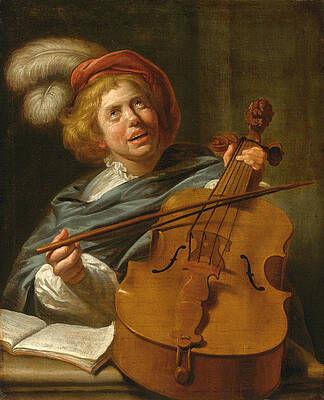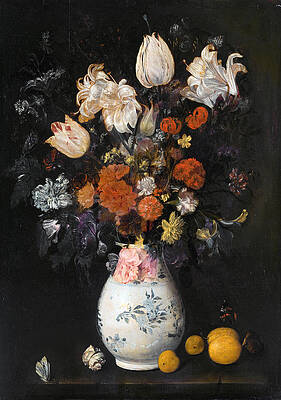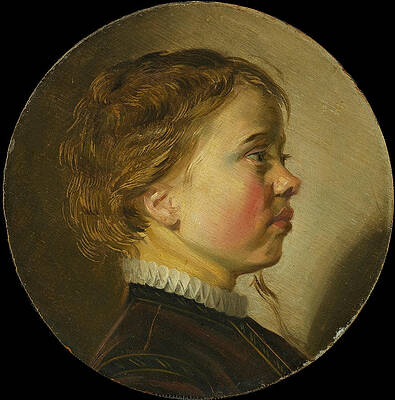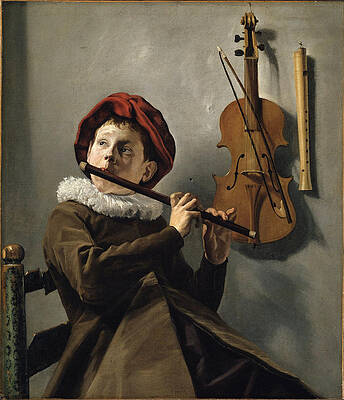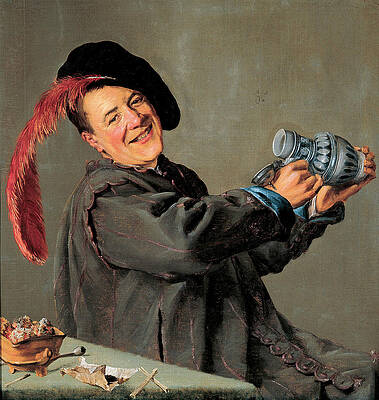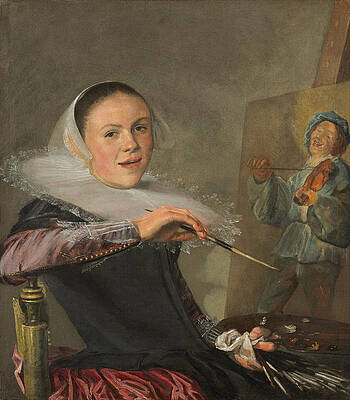Judith Leyster
Paintings
Cello Player
Flowers Vase
Young Boy in Profile
Boy playing the Flute
Jolly Toper
Self-portrait
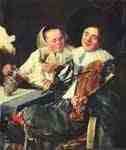
Funny SocietyYoung Boy in Profile
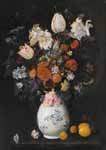
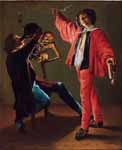
The Last Drop (The Gay Cavalier)Jolly Toper
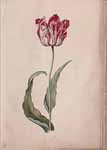
Tulip from Tulip bookCello player
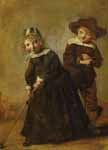
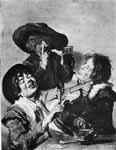
Merry company of three boys with a violin
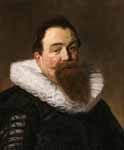
Portrait of a man wearing a white ruff and long beard
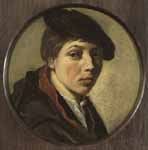
Round portrait of a boy with beret
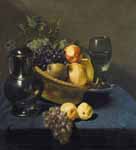
Still life with apples and grapes in a wicker basket, with a roemer and ewer on a blue draped table
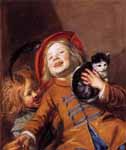
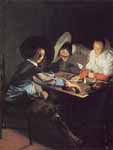
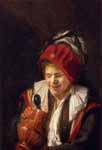
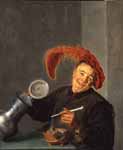
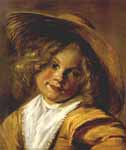
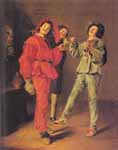
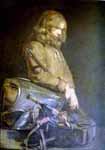
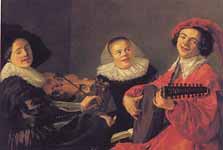
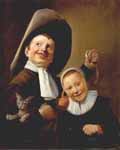
A Boy And A Girl With A Cat And An Eel
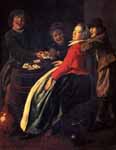
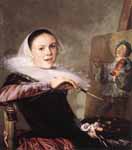
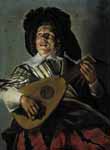
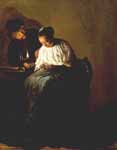
Fine Art Prints | Greeting Cards | Phone Cases | Lifestyle | Face Masks | Men's , Women' Apparel | Home Decor | jigsaw puzzles | Notebooks | Tapestries | ...
Jolly Toper
Judith Jans Leyster (also Leijster) (c. July 28, 1609[1]– February 10, 1660) was a Dutch Golden Age painter. Leyster painted genre works, portraits, and still lifes. Her entire oeuvre was attributed to Frans Hals until 1893, when Hofstede de Groot first attributed seven paintings to her, six of which are signed with her distinctive monogram 'JL*'.[2]
Biography
Leyster was born in Haarlem[3] as the eighth child of Jan Willemsz Leyster, a local brewer and clothmaker. While the details of her training are uncertain, she was already well enough known in 1628 to be mentioned in a Dutch book by Samuel Ampzing titled Beschrijvinge ende lof der stadt Haerlem.
The Happy Couple by Leyster, 1630 (Louvre)
There is some speculation that Leyster pursued a career in painting as a result of her father's bankruptcy and the need to bring in funds for the family. She may have learned painting from Frans Pietersz de Grebber,[4] who was running a respected workshop in Haarlem in the 1620s.[5] During this time her family moved to the province of Utrecht and she may have come in contact with Utrecht Caravaggisti.[1]
Her first known signed work is dated 1629, four years before entering the artist's guild.[6] By 1633, she was a member of the Haarlem Guild of St. Luke, the first female painter to be registered there. Her Self-Portrait, c. 1633 (National Gallery of Art, Washington, D.C.), has been proposed as her presentation piece to the Guild. This self-portrait historically marks a shift from the rigidity of earlier women's self-portraits in favor of a more relaxed, dynamic pose. [7] [8] (The first woman registered was Sara van Baalbergen in 1631, who like Leyster, was not a member of an established artist family in Haarlem, and she also married another painter; Barent van Eysen. There were more women active at that time as painters in Haarlem, but since they worked in family workshops they did not need the professional qualifications necessary to be able to sign works or run a workshop.)[9]
Within two years of her entry into the guild, Leyster had taken on three male apprentices. Records show that Leyster sued Frans Hals for accepting one of her students who left her workshop for that of Hals, less than three days after the student entered the studio. The student's mother paid Leyster four guilders in punitive damages, only half of what Leyster asked for, and, instead of returning her apprentice, Hals settled the argument by paying a three-guilder fine. Leyster was fined herself for not having registered the apprentice with the Guild.[1]
In 1636, Leyster married Jan Miense Molenaer, a more prolific artist of similar subjects. In hopes of better economic prospects, they moved to Amsterdam, where he had existing clients. They remained there for eleven years before returning to the Haarlem area (in Heemstede). In Heemstede they shared a studio in a small house located on the grounds of the present day Groenendaal park. Leyster and Molenaer had five children, only two of whom survived to adulthood.
In 1660 Leyster died aged 50.
Most of Leyster's dated works are from 1629–1635, which coincides with the period before she had children. There are few known pieces painted after 1635: two illustrations in a book about tulips from 1643, a portrait from 1652, and a still life from 1654 that was recently discovered in a private collection.[10] Leyster may have worked collaboratively with her husband as well.[1]
Serenade by Leyster, 1629 (Rijksmuseum)
Leyster and Frans Hals
Although well-known during her lifetime and esteemed by her contemporaries, Leyster and her work became largely forgotten after her death. Leyster's rediscovery came in 1893. A dealer in 1892 had purchased a painting as a Frans Hals — only to discover it had in fact been painted by Judith Leyster. The painting is signed by Leyster with her monogram, but the monogram was unrecognized. In 1893 Cornelis Hofstede de Groot recognized it and wrote the first article on Leyster.[11] Art historians since that period have often dismissed her as an imitator or follower of Hals, although this attitude has changed somewhat in the last few years.[12]
Apart from the lawsuit mentioned above, the nature of Leyster's professional relationship with Hals is unclear; she may have been his student or else a friendly colleague. She may have been a witness at the baptism of Hals' daughter Maria in the early 1630s, since a "Judith Jansder" (meaning "daughter of Jan") was recorded as such, but there were other Judith Janses in Haarlem. Some historians have asserted that Hals — or his brother Dirck Hals — may have been Leyster's teacher due to the close similarity between their work.[1]
Work
Main article: List of paintings by Judith Leyster
She signed her works with a monogram with her initials JL with a star attached. This was a play on words; "Lei-ster" meant "Lead star" in Dutch, which was the common name for the North star used at the time by Dutch mariners. The Leistar was the name of her father's brewery in Haarlem.[6] (Only occasionally did she sign her works with her full name.) Leyster was particularly innovative in her domestic genre scenes. In them, she creates quiet scenes of women at home, often with candle- or lamplight, particularly from a woman's point of view.[13] Much of her other work, especially in music-makers, was similar in nature to that of many of her contemporaries, such as her husband, the Hals brothers, Jan Steen, and the Utrecht Caravaggisti Hendrick Terbrugghen and Gerrit van Honthorst; their genre paintings, generally of taverns and other scenes of entertainment, catered to the tastes and interests of a growing segment of the Dutch middle class.
Public collections
Museums holding works by Judith Leyster include the Rijksmuseum Amsterdam;[14] the Mauritshuis, The Hague; the Frans Hals Museum, Haarlem; the Louvre, Paris; the National Gallery, London; and the National Gallery of Art, Washington DC.
References
Molenaer, Judith. "Leyster, Judith, Dutch, 1609 - 1660," National Gallery of Art website. Accessed Feb. 1, 2014.
Judith Leyster: A Woman Painter in Holland's Golden Age, by Frima Fox Hofrichter, Doornspijk, 1989, Davaco Publishers, ISBN 90-70288-62-1, p.32
Harris, Ann Sutherland and Linda Nochlin, Women Artists: 1550-1950, Los Angeles County Museum of Art, Knopf, New York, 1976
Hofrichter, See Frima Fox. Judith Leyster: A Woman Painter in Holland’s Golden Age (Doornspijk, 1989), p. 14.
Frans Pietersz de Grebber in the RKD
Judith Leyster in the RKD
Frances Borzello, Seeing Ourselves: Women's Self-Portraiture 1998
Hofrichter, Frima Fox. "Judith Leyster's 'Self-Portrait': Ut Pictura Poesis," Essays in Northern European Art. Presented to Egbert Haverkamp-Bergemann on his Sixtieth Birthday, Doornspijk, 1983, pp. 106-109.
Sara van Baalbergen in the RKD
"Unique painting by Judith Leyster rediscovered, to be shown in the upcoming exhibition - CODART - Dutch and Flemish art in museums worldwide". CODART. 2009-12-12. Retrieved 2014-06-23.
Hofstede de Groot, Cornelis. "Judith Leyster," Jahrbuch der Königlich Preussischen Kunstsammlungen vol. 14 (1893), pp. 190-198; 232.
Hofrichter, Frima Fox. "Judith Leyster: Leading Star," Judith Leyster: A Dutch Master and Her World, (Yale University, 1993).
Hofrichter, Frima Fox. "Judith Leyster's The Proposition — Between Virtue and Vice," The Feminist Art Journal vol. 4 (1975), pp. 22-26.
Collection Rijksmuseum
Chadwick, Whitney, Women, Art, and Society, Thames and Hudson, London, 1990.
"Leyster, Judith" in Gaze, Delia, ed. Dictionary of Women Artists. 2 vols. Chicago: Fitzroy Dearborn, 1997.
Welu, James A. and Pieter Biesboer. Judith Leyster: A Dutch Master and Her World, Yale University, 1993.
----
Fine Art Prints | Greeting Cards | Phone Cases | Lifestyle | Face Masks | Men's , Women' Apparel | Home Decor | jigsaw puzzles | Notebooks | Tapestries | ...
----
Artist
A - B - C - D - E - F - G - H - I - J - K - L - M -
N - O - P - Q - R - S - T - U - V - W - X - Y - Z
Retrieved from "http://en.wikipedia.org/"
All text is available under the terms of the GNU Free Documentation License


